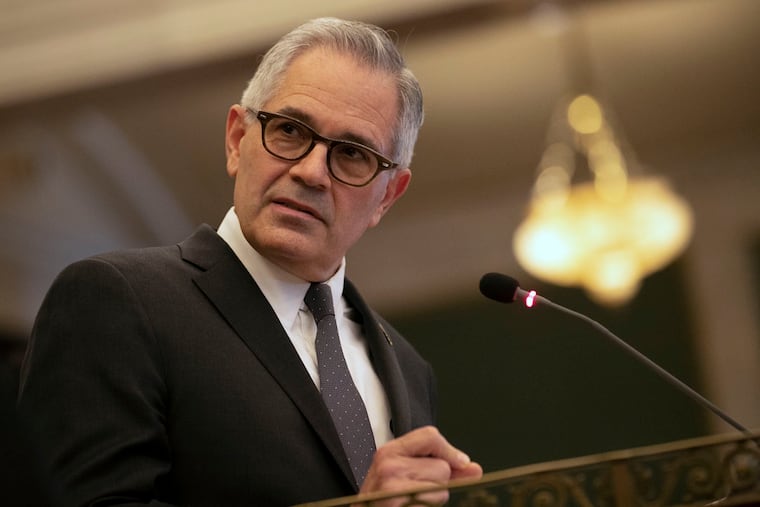With a rare guilty verdict in a police shooting, accountability efforts take a small step forward | Editorial
There is no question that police officers everywhere have a difficult job. But for too long some have been able to literally get away with murder.

The manslaughter conviction of a Philadelphia police officer sends a welcome — if rarely delivered — message that officers do not have a license to kill unarmed suspects.
District Attorney Larry Krasner has faced intense criticism — including a dubious attempt by state lawmakers to impeach him — for his far-left policies. But Krasner’s investigation of police shootings has brought some needed accountability to a police department that for decades has been unable to police itself.
There is no question that police officers everywhere have a difficult job. They are routinely asked to risk their lives to help keep citizens safe. But for too long, some officers have been able to literally get away with murder.
Philadelphia police have shot and killed about 400 people since 1975. During that time, only 10 officers have been charged with murder or manslaughter for on-duty killings. Three of those cases have been brought since Krasner took office in 2018.
Former officer Eric Ruch Jr.’s voluntary manslaughter conviction last week was the first time since 1978 that a Philadelphia police officer had been found guilty of such charges.
» READ MORE: Ex-Philly police officer convicted of voluntary manslaughter in shooting of unarmed man
Ruch shot Dennis Plowden Jr. after a high-speed chase in Olney in December 2017. Prosecutors argued that Plowden was seated, dazed, and posed no threat after crashing his car. Ruch testified that he thought Plowden was reaching for a gun with his right hand when he fired a single shot that pierced Plowden’s left hand before hitting his head.
Prosecutors said the trajectory of the bullet showed Plowden had his hand raised in surrender when he was shot. No gun was found at the scene. None of the police was equipped with a camera, leaving the jury to rely largely on the testimony of police officers at the scene and one civilian witness.
The lack of footage underscored the need for all police officers to wear body cameras while on the job. Cameras can bolster an officer’s argument that a shooting was justified. Though often the videos show officers stepping over the line.
» READ MORE: When do Philly police have to use body cameras?
In several high-profile cases, civilians used mobile phones to film the exchanges, such as in the murder of George Floyd by a Minneapolis officer in 2020. Police dashcam video captured a Chicago officer firing 16 shots and killing Laquan McDonald in 2014.
Nearly half of U.S. law enforcement agencies use body cameras, though their effectiveness in reducing abuse is unclear. The Philadelphia Police Department spent $12.7 million on body cameras in 2017, but sometimes officers don’t turn on the cameras or keep them on for the entire incident.
Nationwide, police shoot and kill about 1,000 people a year, according to a database compiled by the Washington Post. Studies show Black people are killed at a disproportionately higher rate than white people. Another study showed police killings are undercounted by about half.
The federal government should start collecting accurate data on the police use of deadly force. Tracking information is an important first step to addressing where and how to reduce police shootings and other abuses. Too often police unions protect abusive officers from getting removed from the force.
It’s essential that police departments implement better testing for bias as well as increased training on how to avoid and de-escalate confrontations. But at the end of the day, officers who abuse their power must also be held accountable.